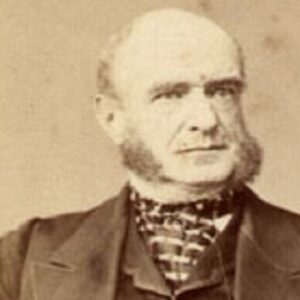John Ella was an eminent English violinist who was largely forgotten by history. He is regarded as a formative influence on musical taste and culture. He was passionate about good music and rose to prominence and influence in the London musical circle and high society from the shadows of artisan-class life. He was extremely dedicated to his musical pursuit and took advantage of every opportunity to gain additional exposure in music—both traditional and contemporary styles. He was a gifted concert promoter and a visionary reformer of musical art. He founded a renowned music society devoted entirely to the promotion and encouragement of ‘Chamber music.’ His career and activities provide a window into the history of chamber music. His music incorporated brilliance and solemnity and was instrumental in sustaining musical activity in nineteenth-century Britain. His musical endeavors, combined with his organizational skills, provided the foundation for the thriving concert-giving enterprise. He has always viewed musical endeavors as a catalyst for cultural development and advancement. He was also an avid traveler, visiting and re-visiting major art galleries, museums, churches, and cathedrals throughout Europe. The essence of these journeys is discovered to be deeply ingrained in his musical compositions. He is largely unknown, and will remain so until people are willing to delve deeply into the lesser-known chambers of music’s heart.
Childhood & Adolescence
He was born to confectioner Richard Ella and his wife Kitty Ella with the intention of following in his father’s footsteps. Later events prompted him to pursue this idea, as he established himself as a promising musician.
In 1817, he began assisting his father in the confectionery trade and also began earning money in the neighborhood as a part-time musician. He acquired certain fundamental skills informally.
M. Femy taught him the violin in 1819. Two years later, he made his professional debut as a member of the Orchestra of Drury Lane Theater. He was then promoted to the King’s Theater’s band.
In 1826, he studied music in Paris with Thomas Attwood and Francois Joseph Fetis. He was later appointed to prominent London orchestras such as the ‘Philharmonic’ and the ‘Ancient Concerts’. He was quickly promoted to a junior position at the Royal Academy of Music.
Career of John
In March 1830, he established the first musicale in London’s Portman Square, which featured a small group of performers accompanied by a minuscule chamber band. Later that year, under the patronage of Augustus Fitzgerald, third duke of Leinster, he gave public concerts.
During his travels to various parts of the European continent, he met a number of musical luminaries with whom he later collaborated to form the musical union.
He quickly commercialized the musical society by turning performances into social gatherings for which membership could be obtained upon personal introduction. A minimum of two instrumental compositions was always included on the program.
Eight afternoon concerts were held each year in Willie’s room, a London social club. When vocal music was incorporated into the program, there was a benefit concert. Its immediate success in early 1852 prompted the establishment of a series of inexpensive evening concerts dubbed ‘Musical Winter Evenings’. It received widespread support from supporters.
In 1858, the sets were relocated to Hanover Square Rooms and, the following year, to St. James’s Hall. Ella discontinued this series with the advent of Monday Popular Concerts.
The musical union came to an end in 1880, when Ella ceased his active participation in the society. He was appointed lecturer at the London Institution in 1885, and the essence of his three lectures were compiled in the musical union record. They were built on the principles of melody, harmony, and counterpoint.
Significant Works of John
He was a member of Queen Victoria’s coronation orchestra. In November 1837, he composed music for the Queen’s first official visit to London’s Guide hall, which he dubbed ‘The Victorian March’. It is now housed in the British Library’s manuscripts department.
He published ‘Musical sketches both abroad and at home’ in 1869. It is a collection of historical, anecdotal, biographical, and critical extracts from his diary, as well as numerous additional extracts. The book’s sketches of personal incidents are entirely true.
Ella’s significant contribution to musical literature is ‘A personal memoir of Meyerbeer.’ It discussed Meyerbeer’s creation, ‘Les Huguenots,’ and Ella’s subsequent visit, enthusing about Meyerbeer’s music.
Private Life of John
John Ella remained single throughout his life, and little is known about his family. With the exception of his mother and elder sister Ann, his ties to his immediate family were tenuous.
He spent the last two decades of his life in London, at 9 Victoria Square. He spent the majority of his time at home due to his advanced age and failing vision.
In his later years, other family members used to pay him visits at home. Ella Harley, John’s niece, was present when Anton Rubinstein, the renowned Russian pianist and composer, paid one of his final visits to see him. John Ella died in his London home on 2 October 1888.
Estimated Net Worth
Ella is one of the wealthiest film actresses and is ranked among the most popular film actresses. Ella Travolta’s net worth is estimated to be around $3million, based on our analysis of Wikipedia, Forbes, and Business Insider.


